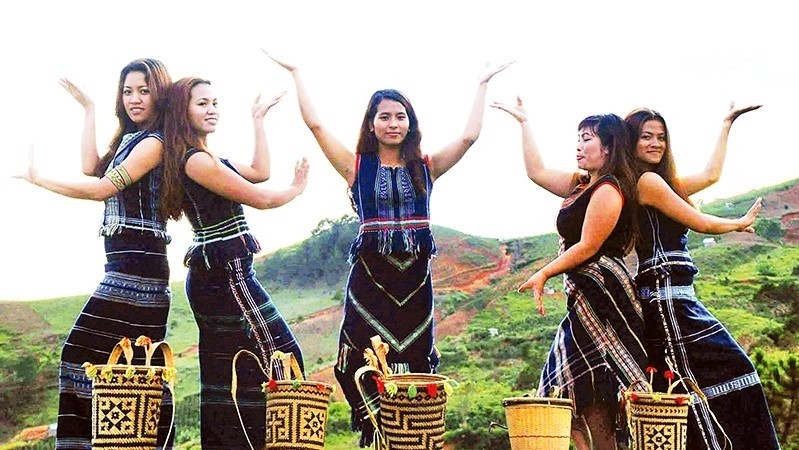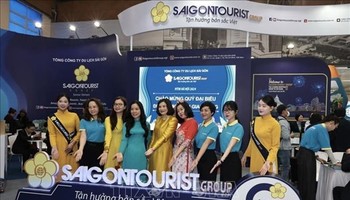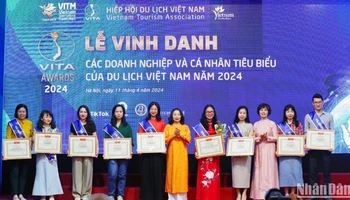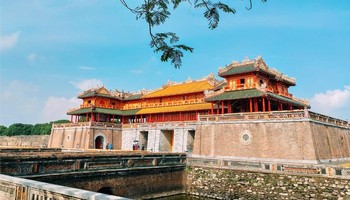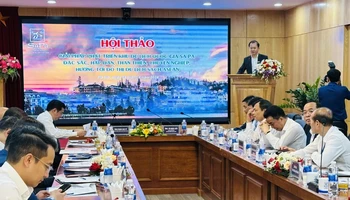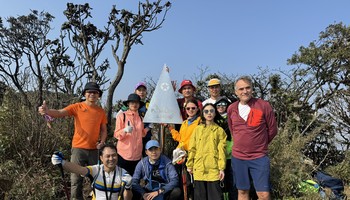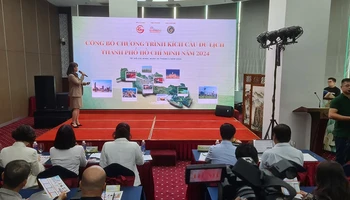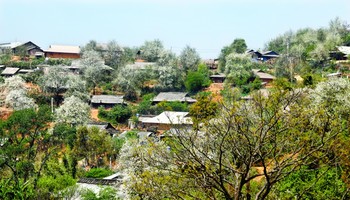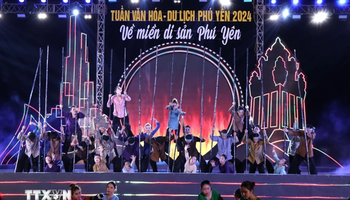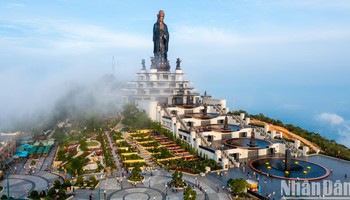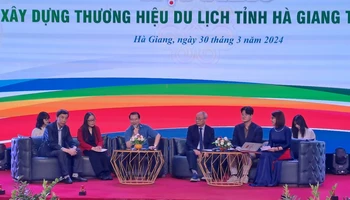They are the indigenous communities who have lived among the high mountains and thick forests in the locality for thousands of years, along with ethnic groups who came from the northern border areas and chose the west highlands to form new villages and homes. Together the ethnic minorities make the spring atmosphere more passionate in the peaceful land.
Hamamokhi is the New Year celebration festival of Chu Ru ethnic minority people along Da Nhim River. The festival is a chance for the local people to pay tribute to their ancestors and reunite with their relatives. During the festival, a village patriarch will represent the villagers to send their prayers to the gods. The adventurous Arija dance of brown-skinned young men and women with bright eyes beside the burning fire under a tree, the taste of ruou can (rice wine drank from the jar through straws), and the delicious dishes of the mountainous region are the highlights of the New Year festival. Although they have maintained separate rituals, Chu Ru people have welcomed the Lunar New Year at the same time as Kinh people for many years. The sympathy and harmony of Vietnamese ethnic groups in this highland region has been further enhanced, especially on the occasion of the spring festivities.
Tam Bo Village of Co Ho ethnic minority people is located in the ancient basalt land Djiring. Patriarch K’Diep clicked his knuckles and said: “Rice fields are ripening. Therefore, Nho Lirvong Festival celebrating the harvesting season of Co Ho people will coincide with the Lunar New Year of Kinh people. With the two festivals being held at the same time, the joy of the villagers will be doubled”. The excitement was expressed through the voice of a Co Ho man, who is approximately 70 years old. Patriarch K’Diep and Co Ho people have generously welcomed the presence of many people from other localities, creating diverse cultural identities.
The spring festivals in the highland region will see the combination and harmony of the various sounds of the droong gongs and yalyau songs of Co Ho people, the m’buot panpipes and love songs of Ma people, the amorous chapi string instrument of Ra Giai people, the Muong community’s gongs and the H’Mong panpipes. It is very interesting that the epic cradle of the Central Highlands harmonises sweet Then songs and sounds of the Tinh gourd lute of the northwestern region. The Xoe Thai (a unique traditional dance of Thai people) and nhay sap (bamboo pole dance) of Muong people are performed beside the Xoang folk dance of Co Ho people and the Chu Ru’s tamja dance.
 |
The people who came from other lands have always preserved and transferred the traditional cultural values of their native lands to younger generations.
Lang Biang Plateau, which was once the homeland of only Mon-Khmer and Malayo-Polynesian ethnic groups, has now become a good land for residents from many localities around the country to live. They have been local people from Nghe An, Ha Tinh, Quang Nam and Quang Ngai flocking to the highlands since 1927. There were farmers from Ha Dong Province (now belonging to Hanoi) who chose this land as their new homeland from 1938-1942. There were also residents from the central province of Thua Thien – Hue coming to the plateau from 1930-1942. Then, since the national reunification in 1975, the highland of 'red soil' has become the home of Vietnamese people from all regions.
The residents, no matter who came first or later, in whichever way or for whatever the reason, had gathered into villages, cultivated and gave birth. The good land at the foot of Truong Son Nam Mountain became an ideal destination for the settlements. However, they have always kept in mind the traditional cultural identities of their motherlands. It is not surprising to see that on the basis of indigenous culture in this land, the presence of cultural colours from other localities around the country has created new harmony and attractive features. In the spring atmosphere, the people in the land of high mountains and thick forests are immersed in the melodies of the northern Cheo (traditional opera) and the space of Quan ho Kinh Bac (love duet) folk singing with male and female singers. The residents from coastal localities, who are living in the new homeland, have always been reminded of their native lands through the ‘ho ba trao’ (a ditty sung while working) in Cau Ngu (whale worship) Festival, and the lyrical melodies of ly giao duyen (a type of folk singing) and Tuong (classical drama) plays.
For decades, the appearance of ethnic minority people from the north to the central highlands has contributed to creating a diverse community. The Lunar New Year Festival, which used to be just the traditional Tet holiday of Kinh people, has now become a common festival of the whole community. In addition to the traditional food of Kinh and indigenous people, such as xoi ong (sticky rice cooked in bamboo pipes), grilled meat, soup of buffalo skins and wild vegetables, and ruou can (rice wine drank from the jar through straws), the New Year's feasts have dishes from the northern mountainous region including thang co (horse meat soup), com lam (rice cooked in bamboo pipes), fried fish and cham cheo (a mixture of chili, salt, ginger leaves, ground “doi” seeds, garlic leaves and ground garlic).
When the colours of the hoa da quy (wild sunflower) have faded, the cherry blossoms are in bloom. The winds blow on ripening rice fields, while coffee harvest begins. These are signs of spring and that Tet is coming. In the dry and sunny air of the Central Highland region, H’Mong girls put colourful clothes and scarves on the cliffs. Ma ethnic young men clean m’buot panpipes for the upcoming Nho Rhe season. The Chu Ru boys beat the gongs for Hamamokhi Festival; meanwhile Tay girls wind traditional turbans while singing luon slao bao (a Then song). There are not many other regions with diverse cultural features like this land!
